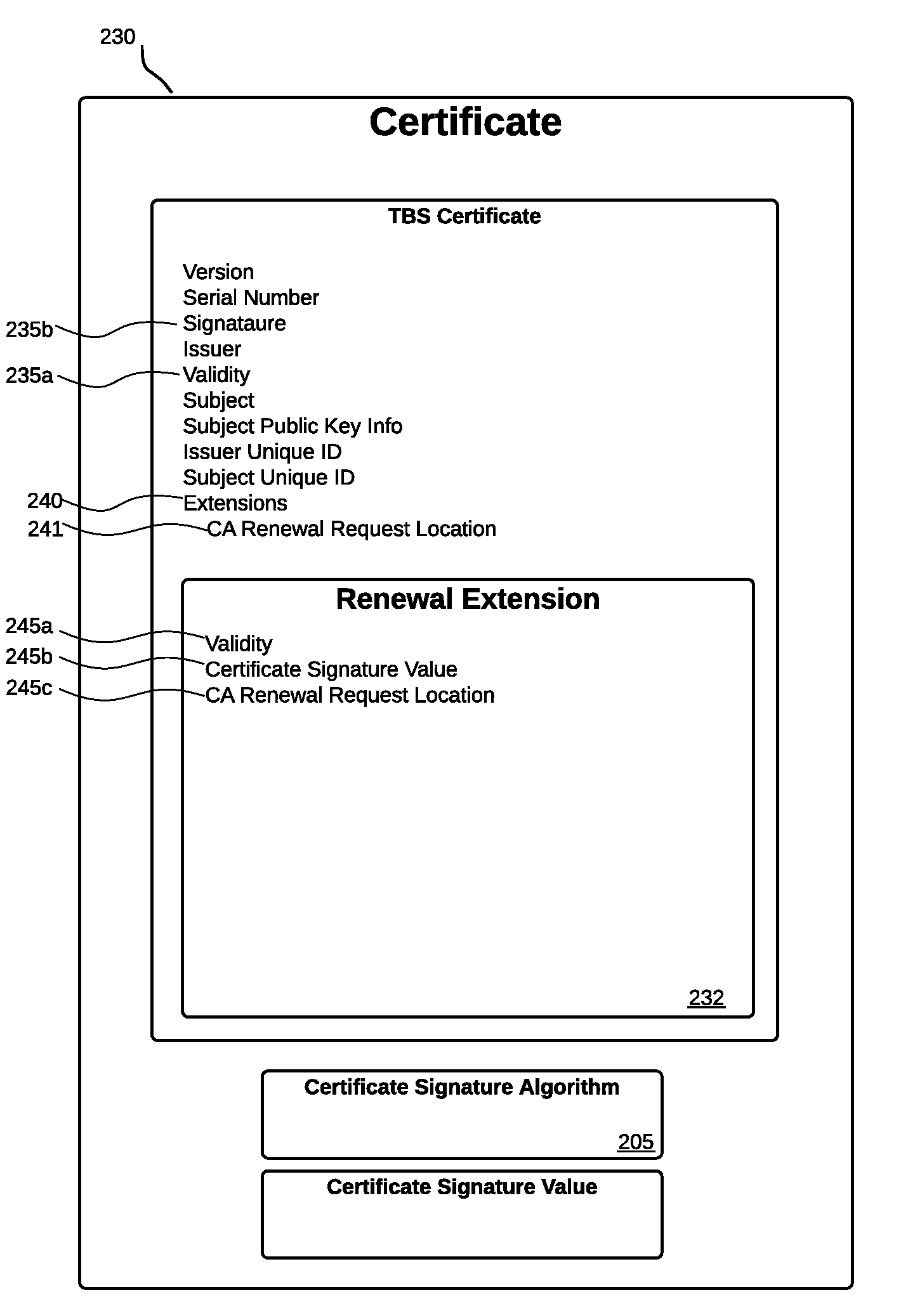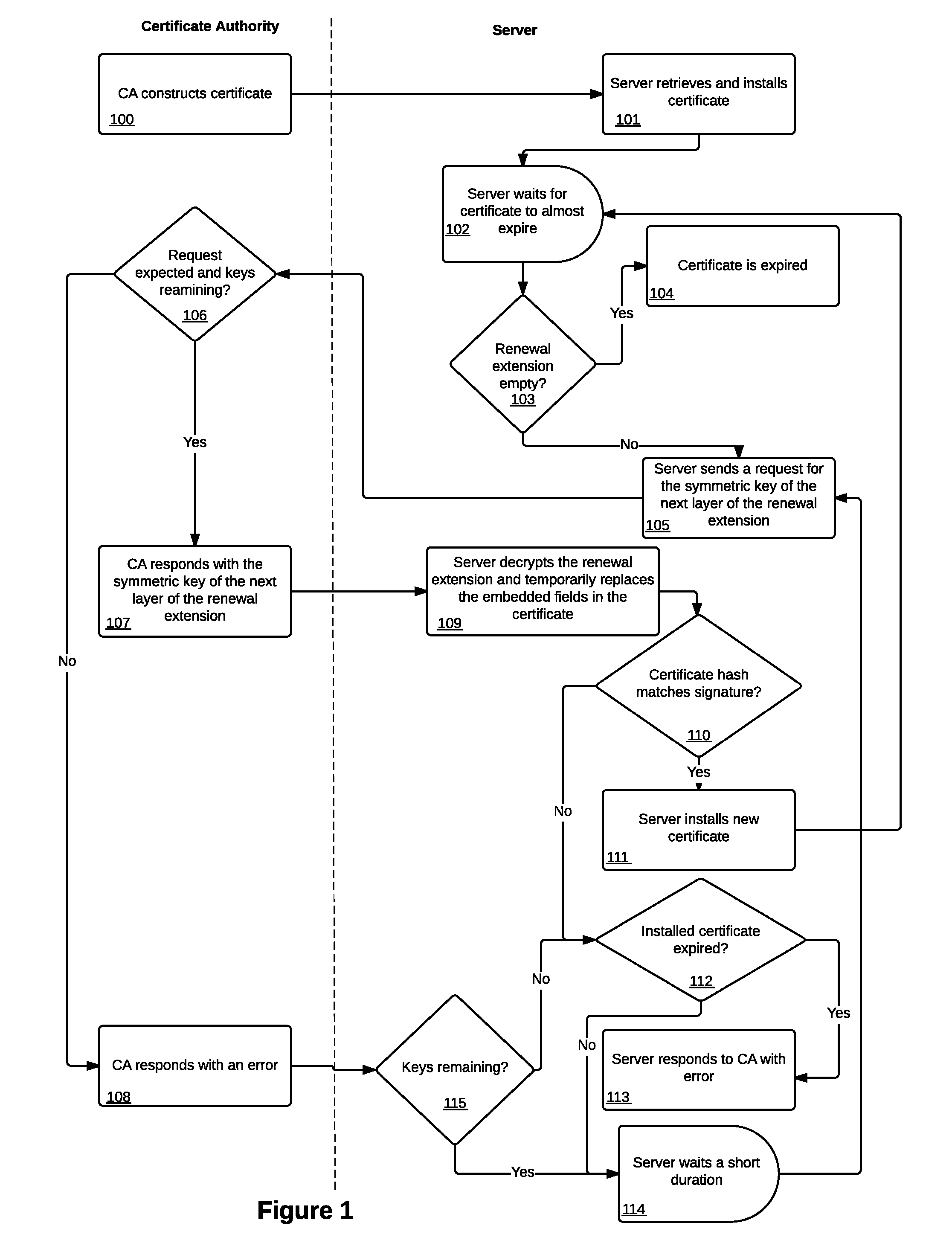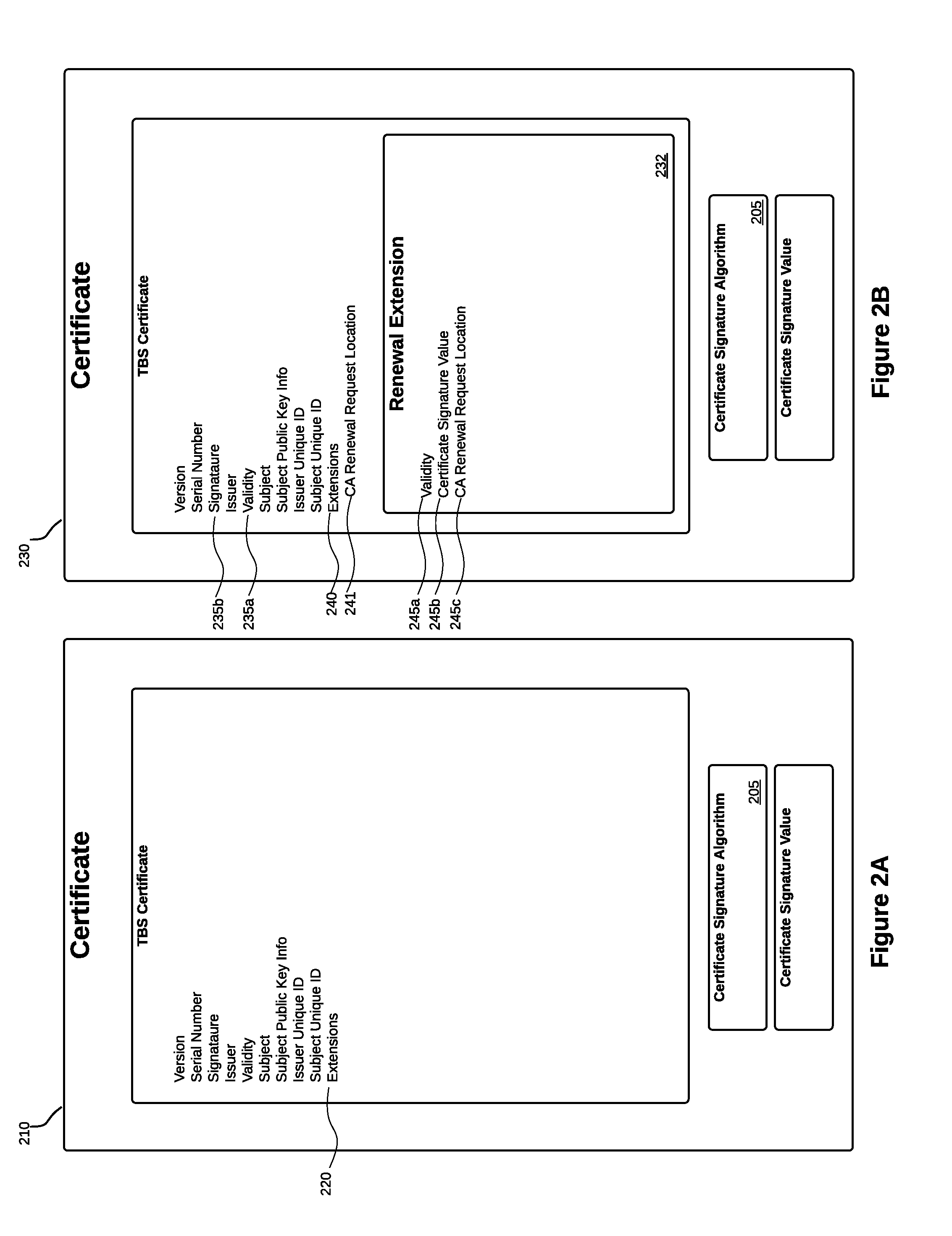Method and system for recursively embedded certificate renewal and revocation
a technology of revocation and certificate, applied in the field of method and system for revocation of revocation certificate, can solve the problems of revoked certificates becoming invalid through revocation, complex current protocols and approaches for certificate renewal and revocation, and almost completely ignore revoked certificates, so as to avoid service outages and other undesirable consequences, and achieve the effect of avoiding revoked certificates and reducing the number of revoked certificates
- Summary
- Abstract
- Description
- Claims
- Application Information
AI Technical Summary
Benefits of technology
Problems solved by technology
Method used
Image
Examples
Embodiment Construction
[0027]This invention is a method and system for renewing and revoking digital certificates, or for updating information and / or fields in a digital certificate. Several exemplary embodiments are described herein.
[0028]Each of the components described herein may refer to a software package, virtual appliance, hardware system, or other apparatus or process that can perform the described function. Although described as separate components or systems, the components could be combined in various ways and still remain within the scope of the invention.
[0029]In at least some embodiments, all communication between a CA and a server is encrypted to prevent man-in-the-middle attacks.
[0030]The following description references a CA as the entity that may receive and / or respond to a request from a server for a symmetric key for the next, or another, layer of the renewal extension. This reference to a CA is exemplary and not exhaustive. The CA could be replaced by any service or entity that may re...
PUM
 Login to View More
Login to View More Abstract
Description
Claims
Application Information
 Login to View More
Login to View More - R&D
- Intellectual Property
- Life Sciences
- Materials
- Tech Scout
- Unparalleled Data Quality
- Higher Quality Content
- 60% Fewer Hallucinations
Browse by: Latest US Patents, China's latest patents, Technical Efficacy Thesaurus, Application Domain, Technology Topic, Popular Technical Reports.
© 2025 PatSnap. All rights reserved.Legal|Privacy policy|Modern Slavery Act Transparency Statement|Sitemap|About US| Contact US: help@patsnap.com



